Parametric Processes for the Implementation of HBIM—Visual Programming Language for the Digitisation of the Index of Masonry Quality
Abstract
1. Introduction
1.1. Parametric Modelling
- level 1: parametric modelling through a simplified interface;
- level 2: parametric modelling via a textual programming language;
- level 3: parametric modelling via a visual programming language.
1.2. VPL as a Language for Writing Digital Processes
- Syntax—VPL has a simplified syntax since the relationships between signs (nodes) are delegated to simple oriented one-dimensional connections (curves) that control the flow of information in and out of the nodes.
- Semantics—VPL allows semantic disambiguation, thanks to metadata information on nodes. In general, each graphical component is enriched with information or links to documentation that explain how the component works.
- Pragmatics—Each graphic node in the language is an action within the program: thus, there is a direct relationship between the language and its results. Several connected nodes activate a series of computational elements that influence the efficiency of the relationship between action (performed by the programmer) and reaction (response of the device being programmed).
- Implementation—Programming languages should be easily modified, also over time, respecting the semantic rules; this condition allows for the pragmatic enrichment of the language and enhances creativity in the algorithm.
- a biunivocal process, where the results (outputs) of the operations in the external software, appropriately remapped, are then fed back into the main code as new inputs, providing specialised information. The process is responsive: a change in the information flow of the main code affects the inputs, and subsequently the outputs, of the external software, which are automatically updated and remapped. The scheme is equally valid if the information is processed not by external software but by add-ons that extend the computational capabilities of the main programming platform;
- a univocal process, where the results of the operations of the external software are not fed back into the main code; this generally involves the compilation in VPL of files compatible with the external platforms. This process hinders the responsive control of the main code over the external information flow.
1.3. HBIM as a Methodology for Information Management of Built Heritage
2. VPL for HBIM Process Integration
- the geometric modelling of complex shapes typical of built heritage (e.g., vaults) in the BIM environment;
- the gathering, manipulation and collection of information in the BIM environment, especially information from different disciplinary fields related to historical buildings.
2.1. Implementation of Geometries and Information in an HBIM Environment
2.2. Management of External Data in an HBIM Environment
3. Methods: VPL Digitisation of the Index of Masonry Quality in HBIM
3.1. Digital Implementation of IQM in Revit: Adding New Instance Parameters
3.2. Digital Implementation of IQM in Revit: Adding New Functions
4. Results: Workflow for IQM Enrichment in an HBIM Model
- photogrammetric survey of the analysed building;
- point cloud definition from photogrammetry (optional);
- HBIM modelling from the survey (within the IQM Revit template);
- critical evaluation of the compliance of the seven IQM parameters, capitalising on the VPL automation to obtain the corresponding IQM results.
Application of the Workflow to the Case Study of Cornillo Nuovo
5. Discussion
6. Conclusions
Author Contributions
Funding
Institutional Review Board Statement
Informed Consent Statement
Data Availability Statement
Acknowledgments
Conflicts of Interest
References
- Potts, A. European Cultural Heritage Green Paper; Europa Nostra: The Hague, The Netherlands; Brussels, Belgium, 2021. [Google Scholar]
- Liévaux, P. Strategic Research and Innovation Agenda 2020: Final Version of the Updated JPI CH SRIA Published. Available online: https://www.heritageresearch-hub.eu/strategic-research-and-innovation-agenda-2020-sria/ (accessed on 8 October 2021).
- Moropoulou, A.; Labropoulos, K.C.; Delegou, E.T.; Karoglou, M.; Bakolas, A. Non-Destructive Techniques as a Tool for the Protection of Built Cultural Heritage. Constr. Build. Mater. 2013, 48, 1222–1239. [Google Scholar] [CrossRef]
- Makoond, N.; Pelà, L.; Molins, C. A Risk Index for the Structural Diagnosis of Masonry Heritage (RISDiMaH). Constr. Build. Mater. 2021, 284, 122433. [Google Scholar] [CrossRef]
- Negri, A. Tecnologie Informatiche per La Conoscenza e La Conservazione. In Trattato di Restauro Architettonico; Carbonara, G., Ed.; Utet Scienze Tecniche: Torino, Italy, 2008; Volume X, ISBN 88-02-04669-7. [Google Scholar]
- Virtudes, A.; Almeida, F. ICT Method for Evaluation of Heritage Buildings Conservation. Procedia Eng. 2016, 161, 1910–1914. [Google Scholar] [CrossRef][Green Version]
- Caetano, I.; Santos, L.; Leitão, A. Computational Design in Architecture: Defining Parametric, Generative, and Algorithmic Design. Front. Archit. Res. 2020, 9, 287–300. [Google Scholar] [CrossRef]
- Diara, F.; Rinaudo, F. From Reality to Parametric Models of Cultural Heritage Assets for HBIM. Int. Arch. Photogramm. Remote Sens. Spat. Inf. Sci. 2019, XLII-2/W15, 413–419. [Google Scholar] [CrossRef]
- Osello, A.; Lucibello, G.; Morgagni, F. HBIM and Virtual Tools: A New Chance to Preserve Architectural Heritage. Buildings 2018, 8, 12. [Google Scholar] [CrossRef]
- Garagnani, S. Building Information Modeling and Real World Knowledge: A Methodological Approach to Accurate Semantic Documentation for the Built Environment. In Proceedings of the 2013 Digital Heritage International Congress (DigitalHeritage), Marseille, France, 28 October–1 November 2013; IEEE: New York, NY, USA, 2013; pp. 489–496. [Google Scholar]
- Zabramski, S.; Ivanova, V.; Gadima, N.; Yang, G.; Leepraphantkul, R. The Effects of GUI on Users’ Creative Performance in Computerized Drawing. In Proceedings of the International Conference on Multimedia, Interaction, Design and Innovation—MIDI ’13, Warsaw, Poland, 24–25 June 2013; ACM Press: New York, NY, USA, 2013; p. 1. [Google Scholar]
- Calvano, M. Disegno Digitale Esplicito. Rappresentazioni Responsive Dell’architettura e Della Città; Aracne Editrice: Roma, Italy, 2019; ISBN 978-88-255-2484-0. [Google Scholar]
- Eastman, C.M.; Teicholz, P.M.; Sacks, R.; Lee, G. BIM Handbook: A Guide to Building Information Modeling for Owners, Managers, Designers, Engineers and Contractors, 3rd ed.; Wiley: Hoboken, NJ, USA, 2018; ISBN 978-1-119-28753-7. [Google Scholar]
- European Committee for Standardization (CEN). EN 17412. Building Information Modelling. Level of Information Need. Concepts and Principles; European Committee for Standardization: Brussels, Belgium, 2020. [Google Scholar]
- ISO 19650:2018; Organization and Digitization of Information about Buildings and Civil Engineering Works, Including Building Information Modelling (BIM)—Information Management Using Building Information Modelling—Part 1: Concepts and Principles. ISO: Geneva, Switzerland, 2018.
- Antonopoulou, S.; Bryan, P. BIM for Heritage: Developing a Historic Building Information Model; Historic England: Swindon, UK, 2017; ISBN 978-1-84802-487-8.
- Yang, X.; Grussenmeyer, P.; Koehl, M.; Macher, H.; Murtiyoso, A.; Landes, T. Review of Built Heritage Modelling: Integration of HBIM and Other Information Techniques. J. Cult. Herit. 2020, 46, 350–360. [Google Scholar] [CrossRef]
- Radanovic, M.; Khoshelham, K.; Fraser, C. Geometric Accuracy and Semantic Richness in Heritage BIM: A Review. Digit. Appl. Archaeol. Cult. Herit. 2020, 19, e00166. [Google Scholar] [CrossRef]
- López, F.J.; Lerones, P.M.; Llamas, J.; Gómez-García-Bermejo, J.; Zalama, E. A Review of Heritage Building Information Modeling (H-BIM). Multimodal Technol. Interact. 2018, 2, 21. [Google Scholar] [CrossRef]
- Spallone, R.; Calvano, M. Roots of ‘Parametric Thinking’ in Palladio’s Villas. Surveying, Interpreting and Visual Programming the Plates from I Quattro Libri Di Architettura. In Proceedings of the International Conference on Metrology for Archaeology and Cultural Heritage; IMEKO: Florence, Italy, 2019; p. 6. [Google Scholar]
- Caetano, I.; Leitão, A. Integration of an Algorithmic BIM Approach in a Traditional Architecture Studio. J. Comput. Des. Eng. 2019, 6, 327–336. [Google Scholar] [CrossRef]
- Saggio, A. Introduzione Alla Rivoluzione Informatica in Architettura; Carrocci: Roma, Italy, 2007; ISBN 978-88-430-4094-0. [Google Scholar]
- Turk, Ž. Ten Questions Concerning Building Information Modelling. Build. Environ. 2016, 107, 274–284. [Google Scholar] [CrossRef]
- Borri, A.; Cangi, G.; Donà, C.; De Maria, A. Metodi qualitativi per la valutazione della qualità muraria. In Manuale Delle Murature Storiche; DEI Tipografia del Genio Civile: Roma, Italy, 2011; pp. 237–294. ISBN 978-88-496-0403-0. [Google Scholar]
- Canfield Smith, D. PYGMALION: A Creative Programming Environment; Stanford University: Stanford, CA, USA, 1975. [Google Scholar]
- Zhang, X. Visual Languages and Visual Programming; Languages and information systems; Plenum Press: New York, NY, USA, 1990; ISBN 978-0-306-43428-0. [Google Scholar]
- Kiper, J.D.; Howard, E.; Ames, C. Criteria for Evaluation of Visual Programming Languages. J. Vis. Lang. Comput. 1997, 8, 175–192. [Google Scholar] [CrossRef]
- Visual Programming Language. Available online: https://en.wikipedia.org/wiki/Visual_programming_language (accessed on 15 November 2021).
- Kuhail, M.A.; Farooq, S.; Hammad, R.; Bahja, M. Characterizing Visual Programming Approaches for End-User Developers: A Systematic Review. IEEE Access 2021, 9, 14181–14202. [Google Scholar] [CrossRef]
- Tsai, C.-Y. Improving Students’ Understanding of Basic Programming Concepts through Visual Programming Language: The Role of Self-Efficacy. Comput. Hum. Behav. 2019, 95, 224–232. [Google Scholar] [CrossRef]
- Morris, C.W. Foundations of the Theory of Signs; University of Chicago Press: Chicago, IL, USA, 1938; ISBN 978-0-226-57577-3. [Google Scholar]
- Boeykens, S.; Neuckermans, H. Visual Programming in Architecture: Should Architects Be Trained As Programmers? In Proceedings of the CAAD Futures 2009: Joining Languages, Cultures and Visions; Tidafi, T., Dorta, T., Eds.; PUM: Montreal, QC, Canada, 2009. [Google Scholar]
- Lin, C.; Lu, S.; Fei, X.; Pai, D.; Hua, J. A Task Abstraction and Mapping Approach to the Shimming Problem in Scientific Workflows. In Proceedings of the 2009 IEEE International Conference on Services Computing, Bangalore, India, 21–25 September 2009; pp. 284–291. [Google Scholar]
- Altintas, I. Collaborative Provenance for Workflow-Driven Science and Engineering; University of Amsterdam: Amsterdam, The Netherlands, 2011. [Google Scholar]
- COBIM Project Common BIM Requirements 2012; buildingSMART Finland: Espoo, Finland, 2012.
- Murphy, M.; McGovern, E.; Pavia, S. Historic Building Information Modelling (HBIM). Struct. Surv. 2009, 27, 311–327. [Google Scholar] [CrossRef]
- Brusaporci, S.; Maiezza, P.; Tata, A. A Framework for Architectural Heritage Hbim Semantization and Development. ISPRS—Int. Arch. Photogramm. Remote Sens. Spat. Inf. Sci. 2018, XLII–2, 179–184. [Google Scholar] [CrossRef]
- Gigliarelli, E.; Calcerano, F.; Cessari, L. Implementation Analysis and Design for Energy Efficient Intervention on Heritage Buildings. In Euro-Mediterranean Conference, Proceedings of the Digital Heritage. Progress in Cultural Heritage: Documentation, Preservation, and Protection; Springer International Publishing: Berlin/Heidelberg, Germany, 2016; pp. 91–103. [Google Scholar]
- Lo Turco, M.; Mattone, M.; Rinaudo, F. Metric survey and BIM technologies to record decay conditions. Int. Arch. Photogramm. Remote Sens. Spat. Inf. Sci. 2017, XLII-5/W1, 261–268. [Google Scholar] [CrossRef]
- Borri, A.; De Maria, A. Il metodo IQM per la stima delle caratteristiche meccaniche delle murature: Allineamento alla circolare n. 7/2019. In Proceedings of the XVII Convegno ANIDIS L’Ingegneria Sismica in Italia, Ascoli Piceno, Italy, 15–19 September 2019; ANIDIS: Ascoli Piceno, Italy, 2019; p. 19. [Google Scholar]
- Calcerano, F.; Martinelli, L.; Calvano, M.; Gigliarelli, E. Knowing the Built Heritage through Digitised Procedures. The Index of Masonry Quality Integrated in HBIM Processes. Dn 2021, 8. Available online: http://www.dienne.org/en/2021/08/26/gigliarelli-en/ (accessed on 8 October 2021).
- Dolce, M.; Prota, A.; Borzi, B.; da Porto, F.; Lagomarsino, S.; Magenes, G.; Moroni, C.; Penna, A.; Polese, M.; Speranza, E.; et al. Seismic Risk Assessment of Residential Buildings in Italy. Bull. Earthq. Eng. 2021, 19, 2999–3032. [Google Scholar] [CrossRef]
- Gigliarelli, E.; Cessari, L.; Calcerano, F.; Martinelli, L. Valutazione Della Vulnerabilità Sismica Attraverso l’integrazione Di Tecniche Tradizionali e Sistemi BIM. In Progetto SISMI-DTC Lazio. Conoscenze e innovazioni per la ricostruzione e il miglioramento sismico dei centri storici del Lazio; Caravaggi, L., Ed.; Quodibet: Macerata, Italy, 2020; ISBN 978-88-229-0557-4. [Google Scholar]
- Bianchini, C.; Senatore, L.J.; Catena, L. The Democratization of Processes and the Use of Remotely Guided Acquisition Tools for Survey 2.0. Diségno 2019, 4, 67–78. [Google Scholar]
- Pocobelli, D.P.; Boehm, J.; Bryan, P.; Still, J.; Grau-Bové, J. BIM for Heritage Science: A Review. Herit. Sci. 2018, 6, 30. [Google Scholar] [CrossRef]
- Calvano, M.; Lo Turco, M.; Giovannini, C.E.; Tomalini, A. The Narrated Drawing. Explicating Algorithms for Teaching Digital Modelling. In Proceedings of the Connettere | Connecting | Un Disegno per Annodare e Tessere | Drawing for Weaving Relationships, Reggio Calabria e Messina, Italy, 17–19 September 2020; Franco Angeli: Milan, Italy, 2020; pp. 196–215. [Google Scholar]
- ISO 16739:2013; Industry Foundation Classes (IFC) for Data Sharing in the Construction and Facility Management Industries. ISO: Geneva, Switzerland, 2013.
- Mirtschin, J. Learn—Geometry Gym. Available online: https://technical.geometrygym.com/learn (accessed on 11 January 2022).
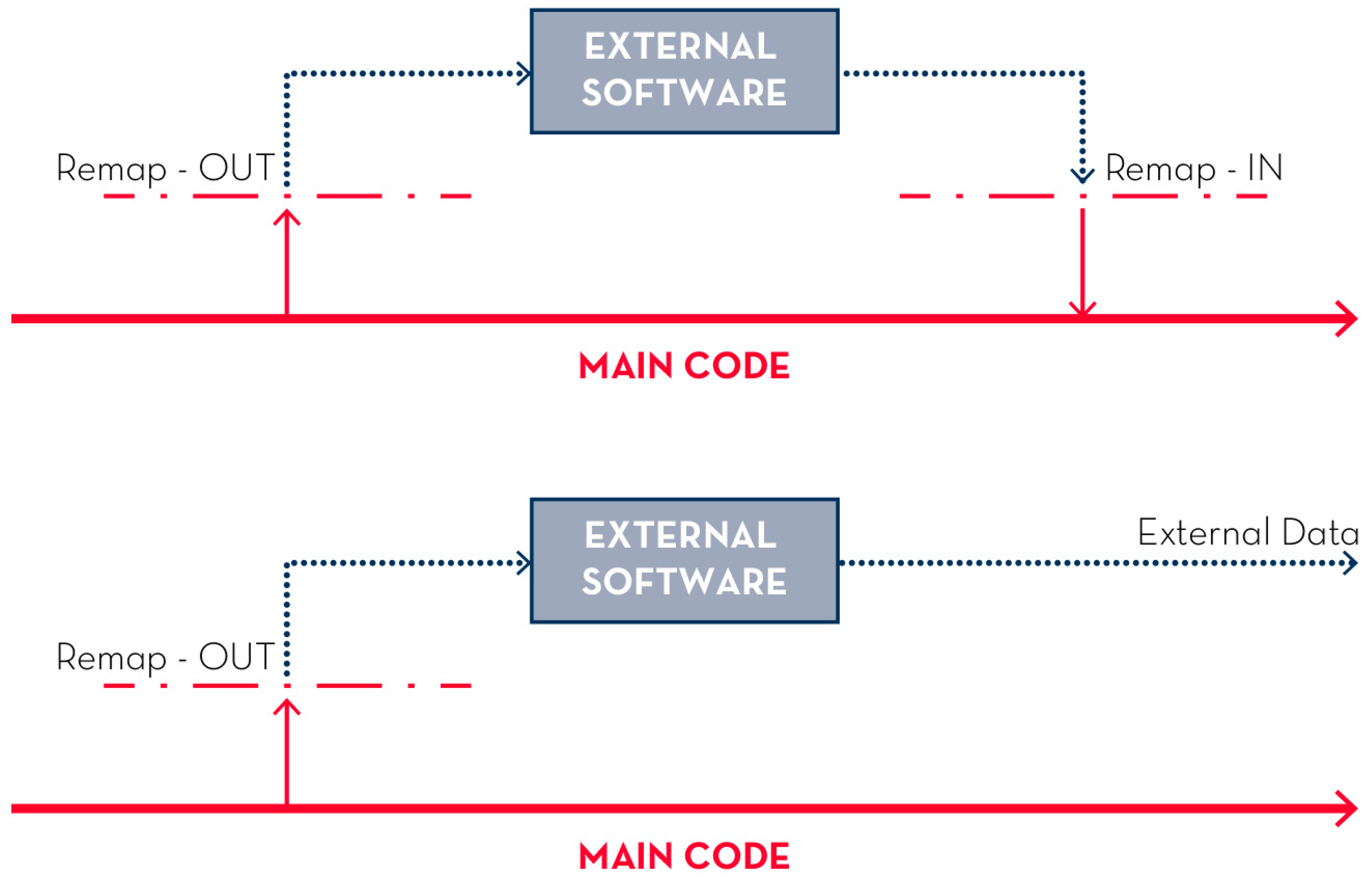
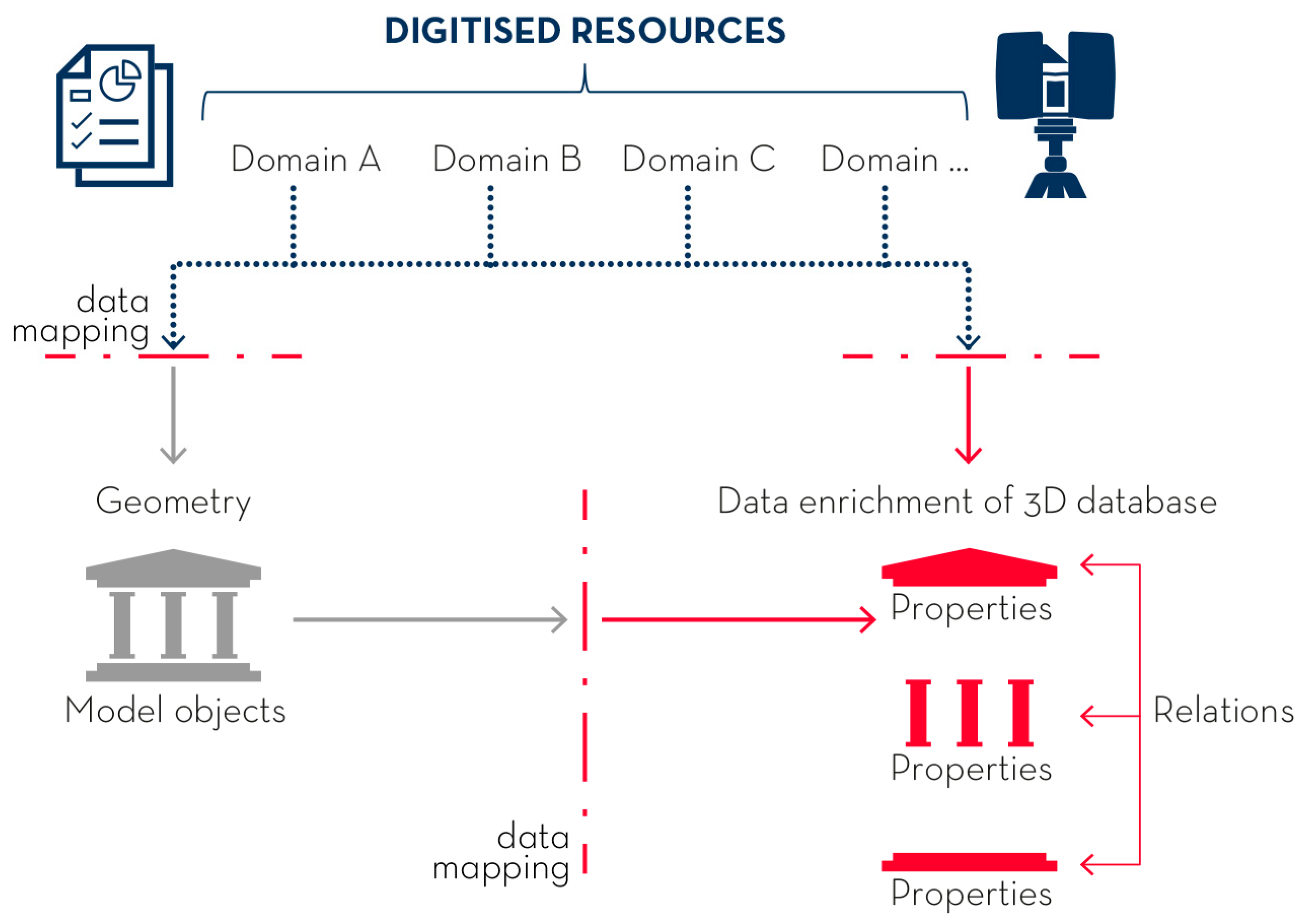
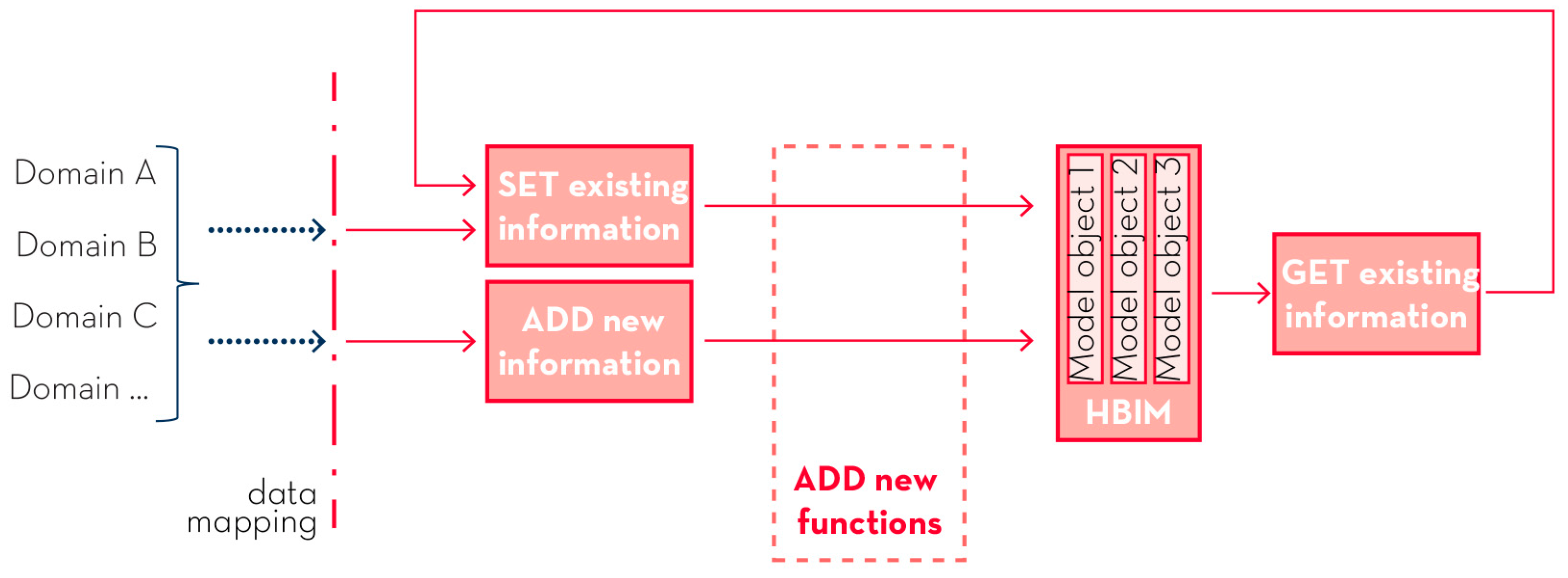

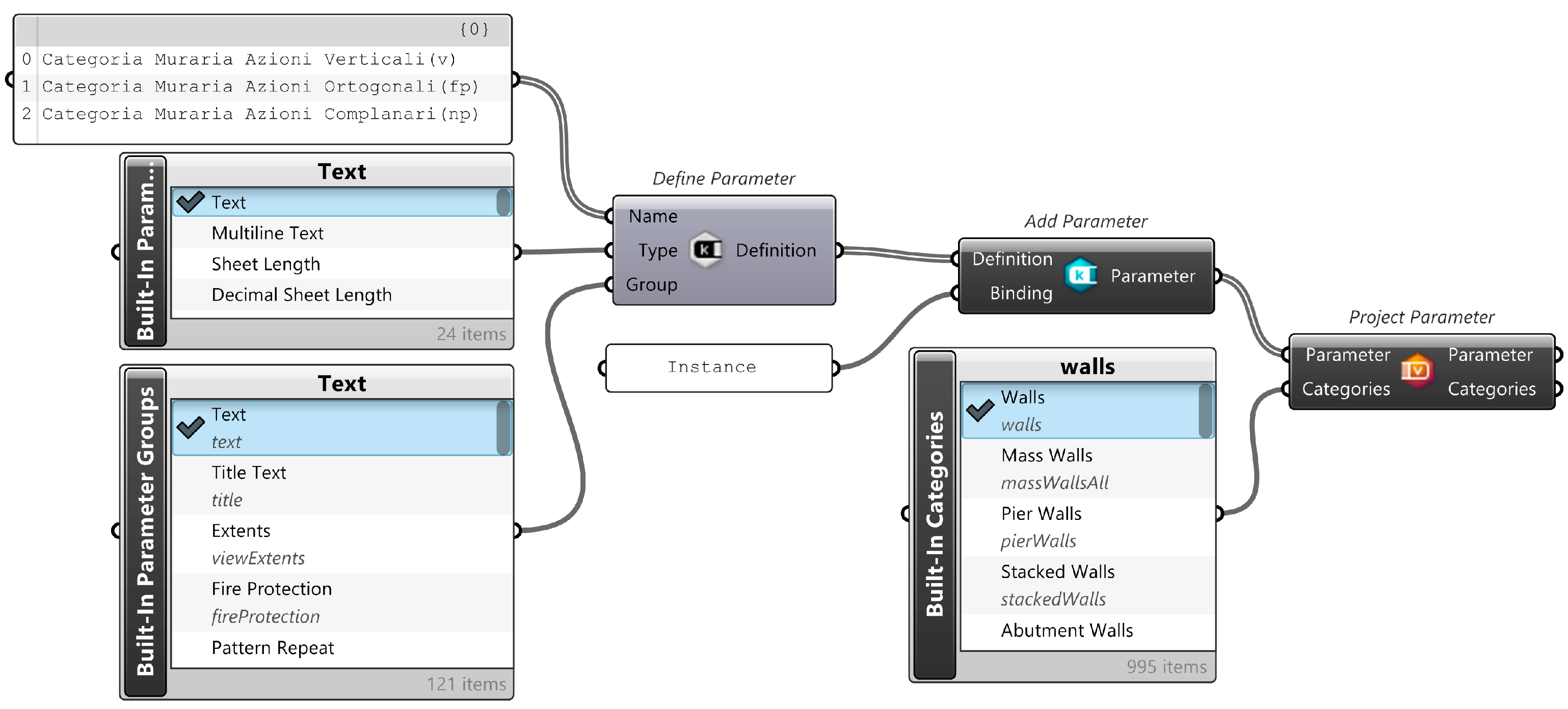
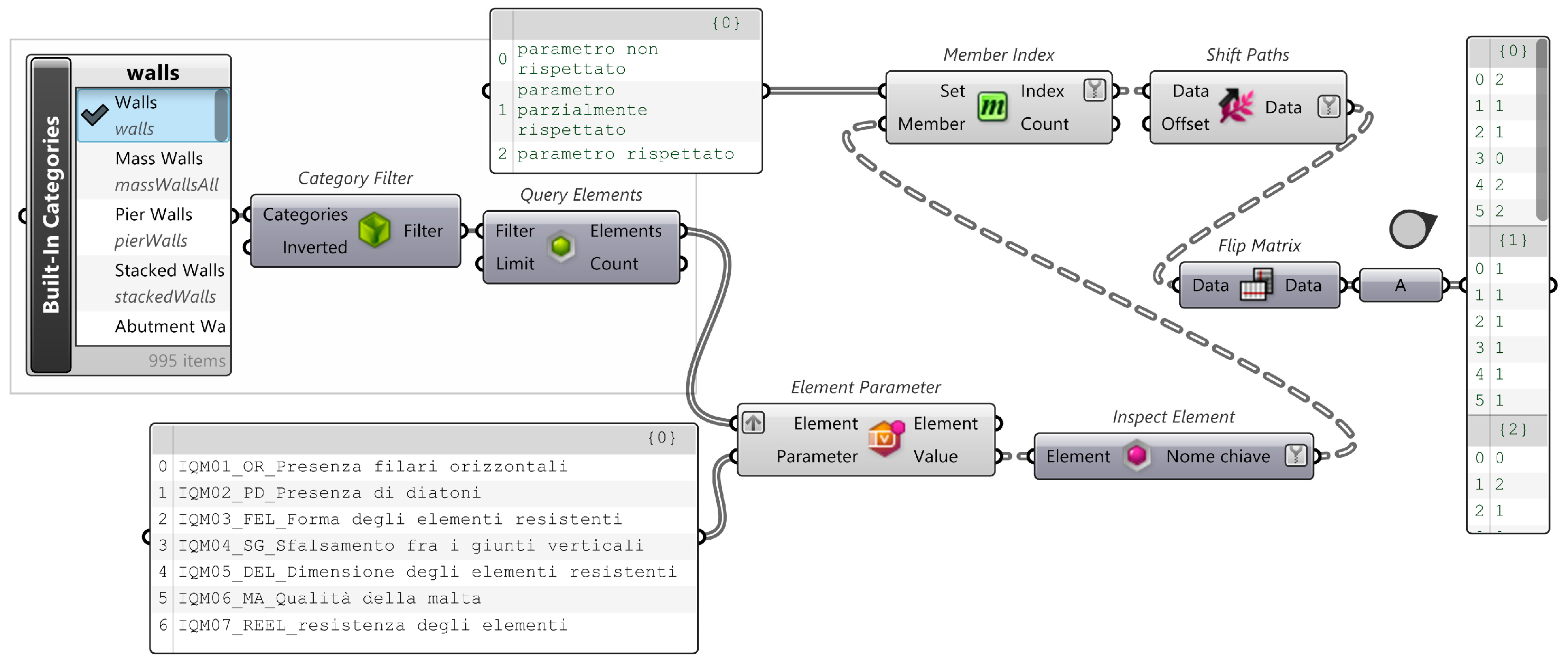
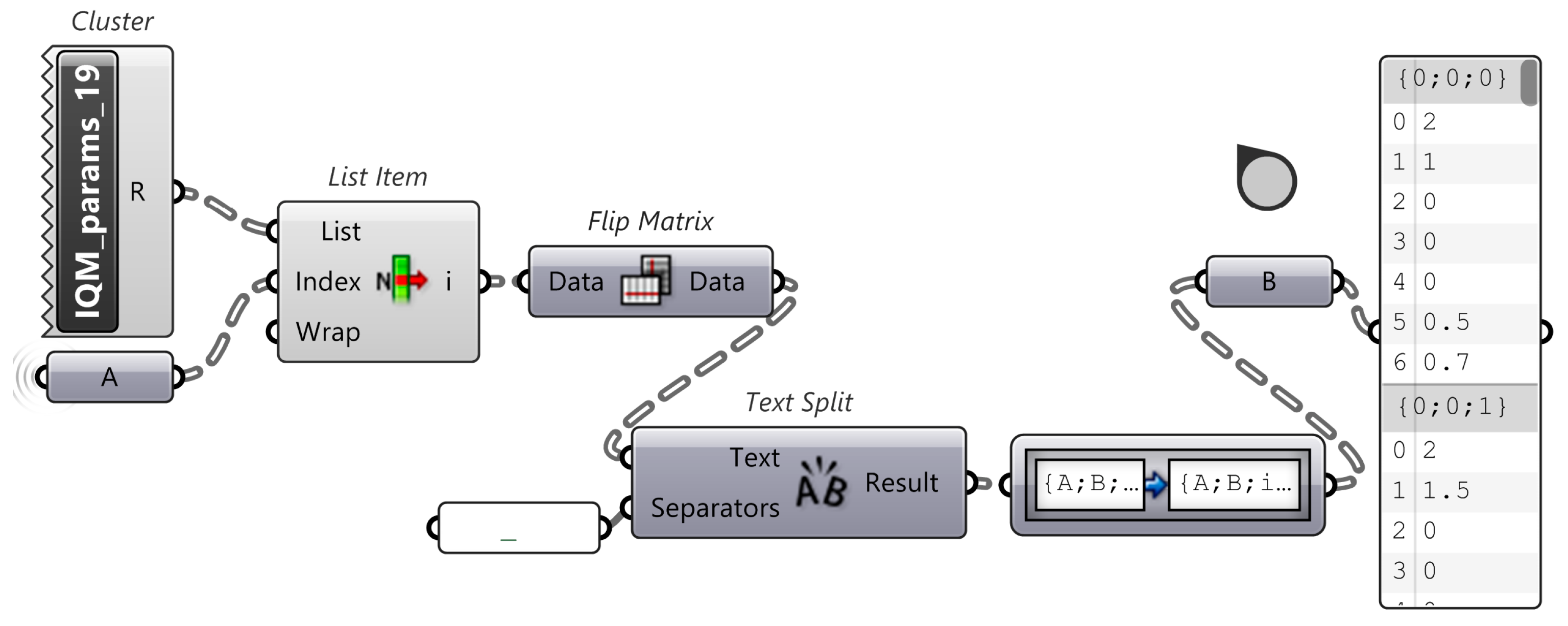




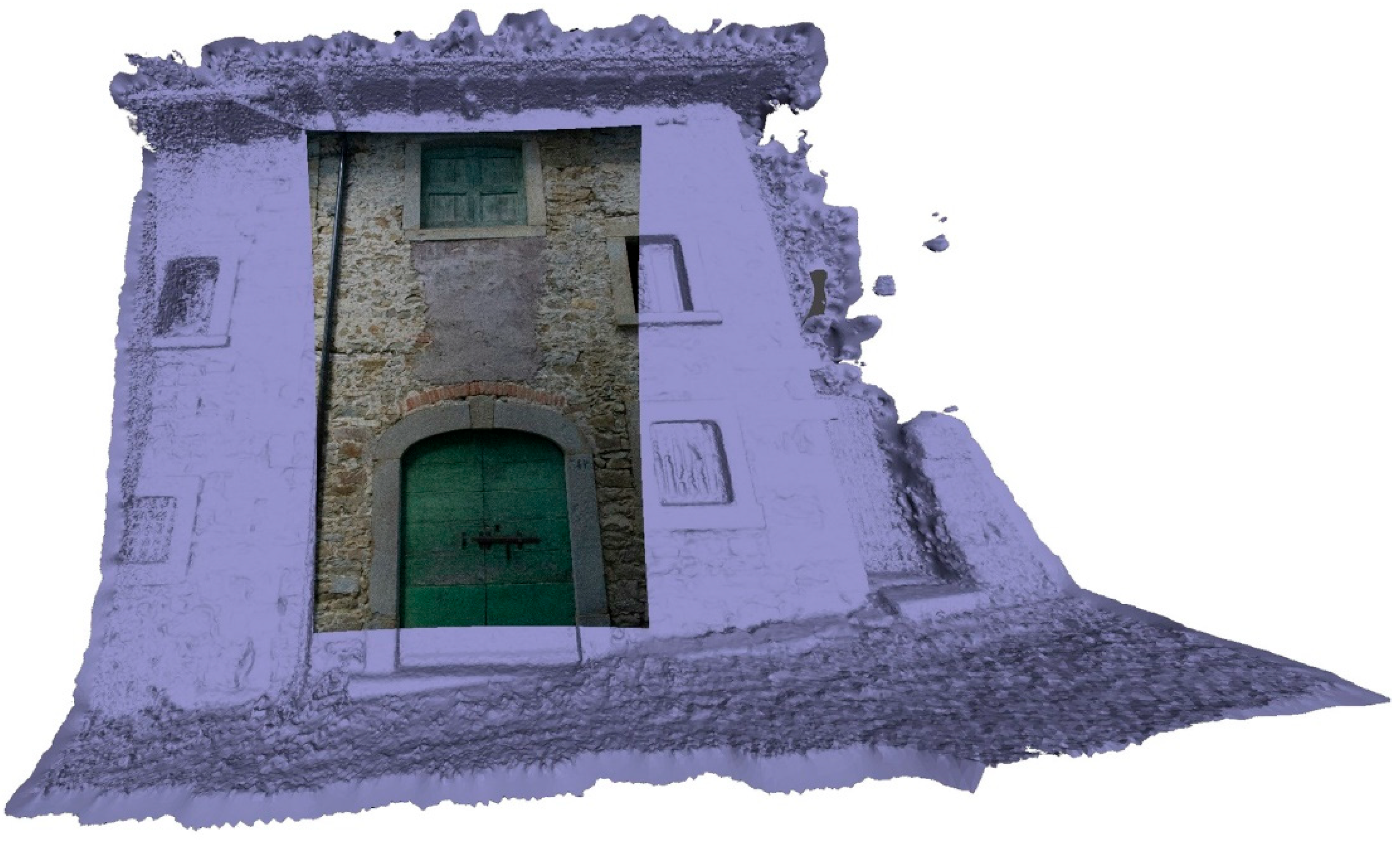

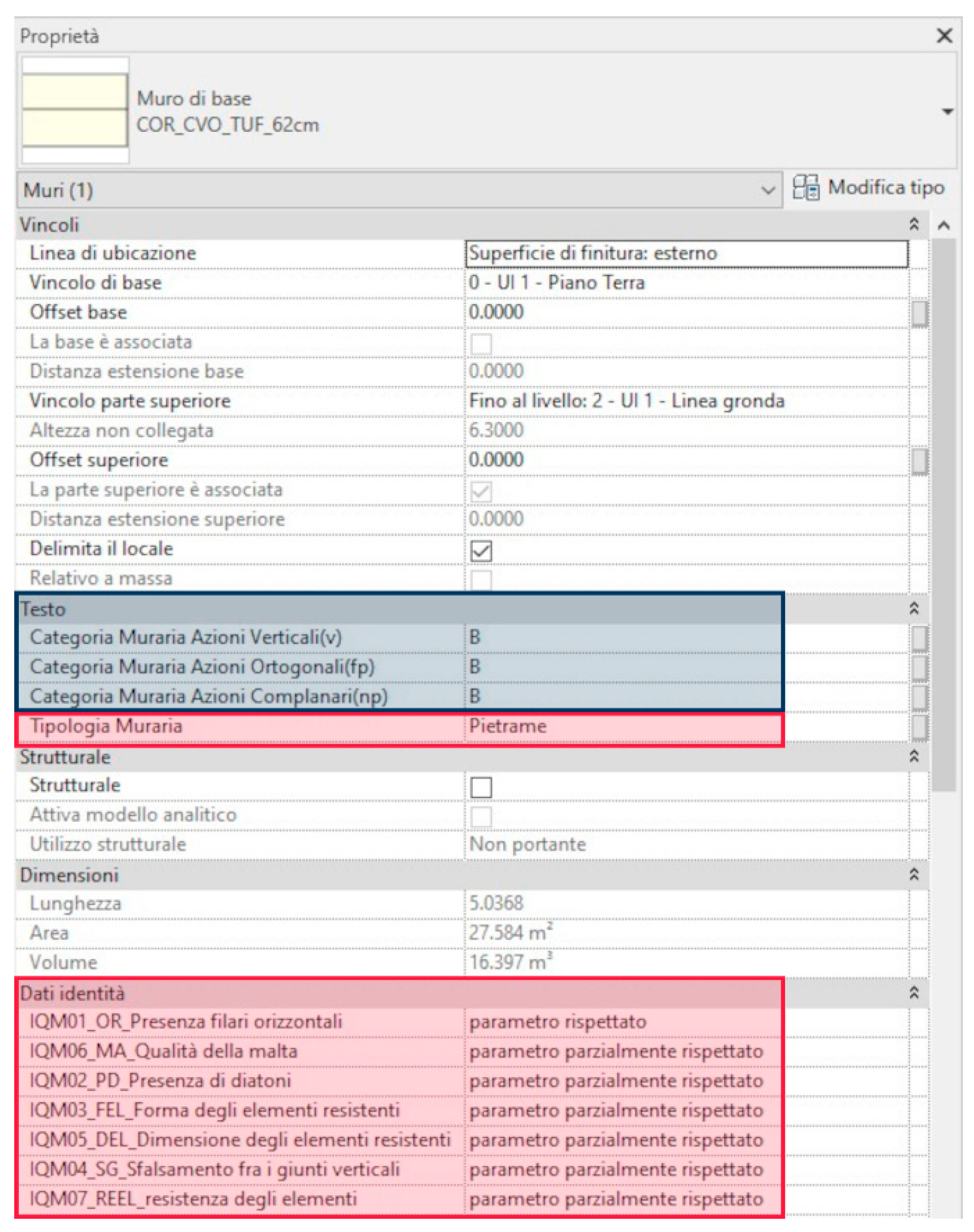

Publisher’s Note: MDPI stays neutral with regard to jurisdictional claims in published maps and institutional affiliations. |
© 2022 by the authors. Licensee MDPI, Basel, Switzerland. This article is an open access article distributed under the terms and conditions of the Creative Commons Attribution (CC BY) license (https://creativecommons.org/licenses/by/4.0/).
Share and Cite
Calvano, M.; Martinelli, L.; Calcerano, F.; Gigliarelli, E. Parametric Processes for the Implementation of HBIM—Visual Programming Language for the Digitisation of the Index of Masonry Quality. ISPRS Int. J. Geo-Inf. 2022, 11, 93. https://doi.org/10.3390/ijgi11020093
Calvano M, Martinelli L, Calcerano F, Gigliarelli E. Parametric Processes for the Implementation of HBIM—Visual Programming Language for the Digitisation of the Index of Masonry Quality. ISPRS International Journal of Geo-Information. 2022; 11(2):93. https://doi.org/10.3390/ijgi11020093
Chicago/Turabian StyleCalvano, Michele, Letizia Martinelli, Filippo Calcerano, and Elena Gigliarelli. 2022. "Parametric Processes for the Implementation of HBIM—Visual Programming Language for the Digitisation of the Index of Masonry Quality" ISPRS International Journal of Geo-Information 11, no. 2: 93. https://doi.org/10.3390/ijgi11020093
APA StyleCalvano, M., Martinelli, L., Calcerano, F., & Gigliarelli, E. (2022). Parametric Processes for the Implementation of HBIM—Visual Programming Language for the Digitisation of the Index of Masonry Quality. ISPRS International Journal of Geo-Information, 11(2), 93. https://doi.org/10.3390/ijgi11020093








